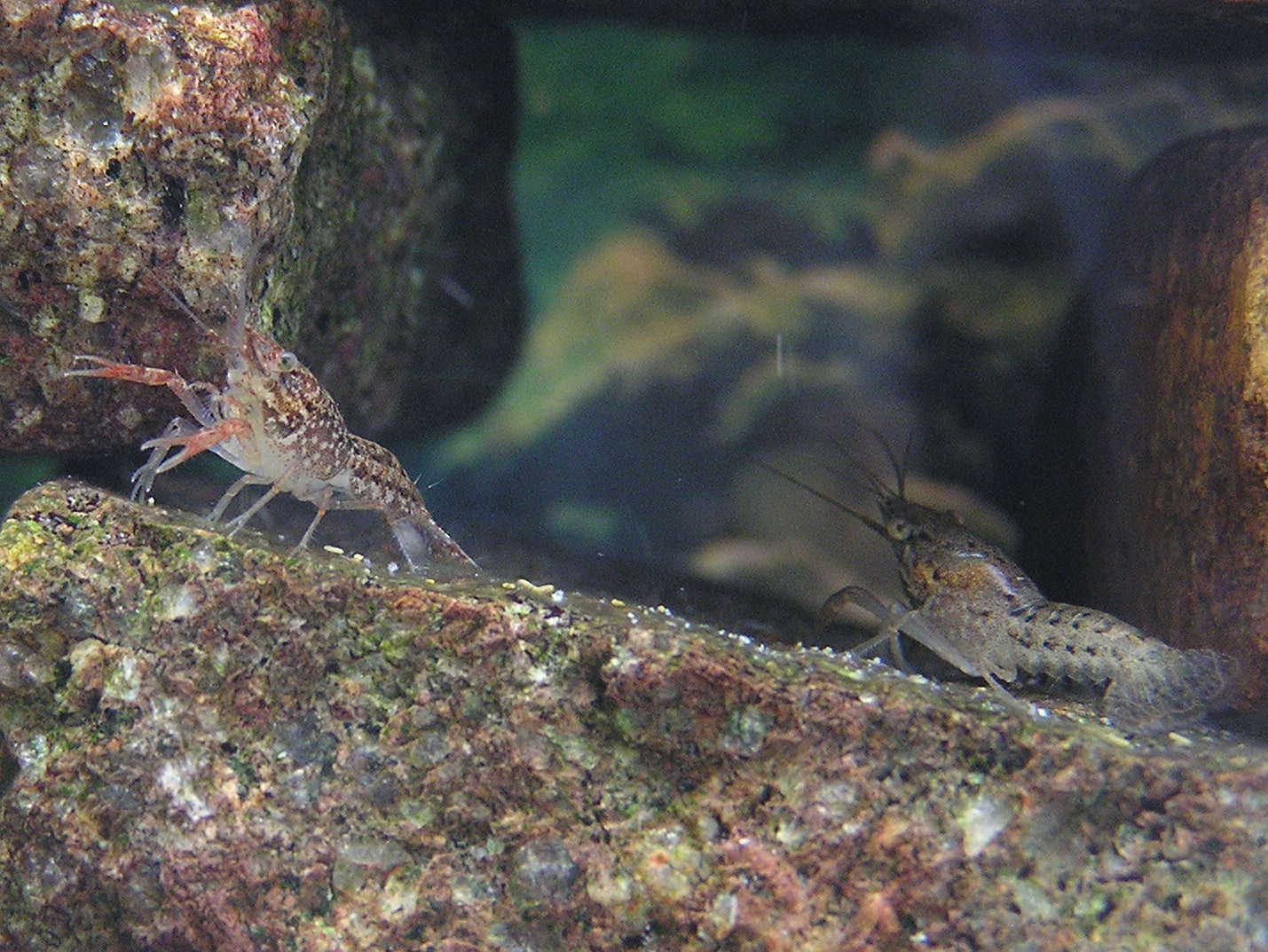 |
| Marmorkrebs, Water Mutants Who Give Birth Without Mating |
Marmorkrebs, Water Mutants Who Give Birth Without Mating. Lobster is a type of shrimp that is easily recognized by its large claws. Based on their habitat, lobsters can be divided into two types, namely saltwater crayfish and freshwater crayfish.
Freshwater crayfish are also known for their habit of inhabiting rocky bottom waters. And because they have colorful shells and are relatively easy to care for, crayfish are often kept as pets.
One type of freshwater crayfish that is quite popular among freshwater aquarium owners is marmorkrebs or in scientific language Procambarus fallax f. virginalis where these lobsters are kept by hobbyists in North America.
Marmorkrebs, Water Mutants Who Give Birth Without Mating
The marmorkreb can be identified by looking at the pattern of its shell, which is covered in red, silver and black patches. It is from the unique color of their shells that these prawns are nicknamed "marmorkrebs". In German itself, Marmorkreb means Marbled crayfish.
Marmorkrebs generally have a lifestyle similar to that of most freshwater crayfish. This animal is an omnivorous animal, meaning that these animals are willing to eat whatever happens in the environment in which they live. Whether it's aquatic plants, snails, water insects, and even other lobsters whose shells are still soft after molting.
 |
| Marmorkrebs, Water Mutants Who Give Birth Without Mating |
To find food, crayfish detect odors carried by water currents by relying on their sensitive antennae. After finding the food, the lobster will then use its claws to shred the food so that it can be chewed.
Even though it looks scary, freshwater crayfish are not animals without enemies. Large aquatic animals such as turtles and large fish are known to live by eating freshwater crayfish.
As the most basic form of self-protection, crayfish will hide between the rocks. Lobsters can also jump backwards and then swim while bending their tails if they have to run away quickly.
When cornered, the crayfish can still defend itself using its painful tongs. What makes the marmorkreb special when compared to other freshwater crayfish species is its unique ability to reproduce.
Usually, male and female freshwater crayfish must mate before they can reproduce. However, this does not apply to marmorkrebs. All marmorkrebs are female, but not just ordinary females.
If a marmorkrebs is kept in an aquarium alone, then in just three months the aquarium will be filled with 300 marmorkrebs. In biology, the ability to reproduce without a partner is known as parthenogenesis.
 |
| Marmorkrebs, Water Mutants Who Give Birth Without Mating |
Parthenogenesis itself is not a new phenomenon and can be found in other animals such as Komodo dragons and aphids. But marmorkrebs are by far the only species of crayfish known to perform parthenogenesis.
Marmorkrebs originally mutated from the slough crayfish species or in scientific language Procambarus fallax. However, because of their unique ability to reproduce, swamp shrimp and marmorkrebs are now considered two separate species.
Animals that grow from small larvae
In addition to their ability to produce offspring without mating, marmorkrebs generally have a life cycle that is not much different from ordinary freshwater crayfish.
Egg-laying female Marmorkrebs will lay the eggs under their tails. After about three months, the eggs will then hatch into zoea larvae which look like shrimp, but are very small and white in color.
These larvae already have the ability to swim. But when they feel threatened, they can immediately return to hide under their mother's tail. After reaching a certain size, the larvae then begin to live on the bottom of the water.
Since the outer shells of the crayfish do not harden, the young lobsters must molt each time they reach a certain growth stage. After molting, the lobster will then hide briefly until the outer shell hardens.
A marmorkrebs is known to grow to a size of 13 centimeters. The marmorkrebs' unique ability to reproduce was first identified in 1995 in Germany, when a local pet shop owner realized that the lobsters he kept were reproducing independently even though they had no close partners.
Problems began to emerge when more and more freshwater hobbyists kept these lobsters. Because marmorkrebs can breed without mating, in just a matter of months the aquarium used to keep marmorkrebs is overcrowded.
Some of these marmorkrebs are then thrown into the wild so that their owners no longer need to provide food and shelter for them. Again, new problems arise, because these animals then reproduce without control and threaten the sustainability of local wildlife.
Responding to this phenomenon, the Canadian government then determined that marmorkrebs should not be released into the wild. The European Union has even gone so far as to state that marmorkrebs should not be kept at all.
 |
| Marmorkrebs, Water Mutants Who Give Birth Without Mating |
The marmorkrebs phenomenon itself is not always treated negatively. In Madagascar, since the early 2000s marmorkrebs have been found in rice fields.
This phenomenon is thought to have occurred because foreign workers secretly released their domestic marmorkrebs into the wild. Since marmorkrebs are essentially a type of edible lobster, marmorkrebs are being hunted and sold as a high protein food ingredient.
Read More: Sea Wasp, An Invisible Dangerous Creature
Separately, a columnist for the Scientific American blog also suggested that marmorkrebs could be used as guinea pigs in the future because they are easy to breed and raise. By: Ochie











0 comments